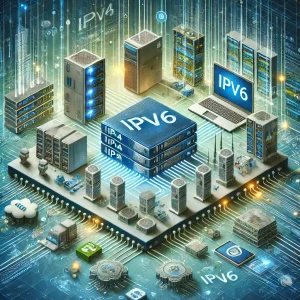
Today’s fast-evolving technology landscape pushes businesses to continuously seek ways to cut costs and enhance efficiency. Network Function Virtualization (NFV) offers a revolutionary shift from traditional hardware-based operations to more flexible software-driven solutions. This blog post explores how NFV is transforming network services through virtualization.
Understanding NFV
What is Network Function Virtualization?
Network Function Virtualization uses IT virtualization technology to transform network node functions into building blocks that create communication services. NFV enables the deployment of network services like routers, firewalls, and load balancers on commodity hardware, moving away from reliance on specialized hardware.
The Evolution of NFV
Service providers initiated NFV to reduce the deployment time of new network services, lower costs, and improve scalability and flexibility. Since telecom giants introduced it in 2012, NFV has grown across various sectors due to its significant benefits.
How NFV Operates
Core Components of NFV
NFV detaches network functions from dedicated hardware, implementing them in software that can shift to different hardware or network locations without new equipment installation. The main components of NFV include:
- NFV Infrastructure (NFVI): Comprising all hardware and software resources that create the environment for deploying Virtual Network Functions (VNFs).
- Virtual Network Functions (VNFs): These are software implementations of network functions running on the NFVI.
- Management and Network Orchestration (MANO): This framework manages and orchestrates the NFV resources, ensuring proper allocation and use.
Benefits and Advantages
Key Benefits of Implementing NFV
- Cost Efficiency: NFV reduces the need for specialized network equipment by utilizing standard server hardware, which is cheaper and more readily available.
- Agility in Service Deployment: NFV allows network operators to deploy new services swiftly and flexibly, reducing time to market.
- Scalability and Elasticity: NFV facilitates easy scaling of network services to meet demand without physical hardware changes.
- Energy Efficiency: NFV lowers energy consumption by operating network functions on shared server infrastructure.
Challenges and Considerations
Facing the Challenges of NFV
- Security Concerns: The virtual framework might expose new security vulnerabilities if not adequately isolated and secured.
- Management Complexity: The shift to software-centric networks introduces complexities in managing virtual network functions, requiring new strategies and tools.
- Interoperability Issues: Ensuring smooth operation among various NFV components from different vendors presents challenges.
Real-World Applications
NFV in Action Across Industries
- Telecommunications: Telecom companies use NFV to virtualize essential functions, improving service flexibility and reducing costs.
- Cloud Services: Cloud providers employ NFV to develop scalable virtual networks that support robust cloud environments.
- Enterprise Networks: Enterprises adopt NFV to streamline network service management, boost agility, and cut costs.
Conclusion
Network Function Virtualization marks a significant paradigm shift in how network services are provided and managed, offering cost savings, increased flexibility, and opportunities for innovation. As NFV continues to mature, its adoption will likely expand, further transforming the network landscape. Companies that embrace NFV can enhance their operational efficiency and maintain a competitive edge in the digital economy.





